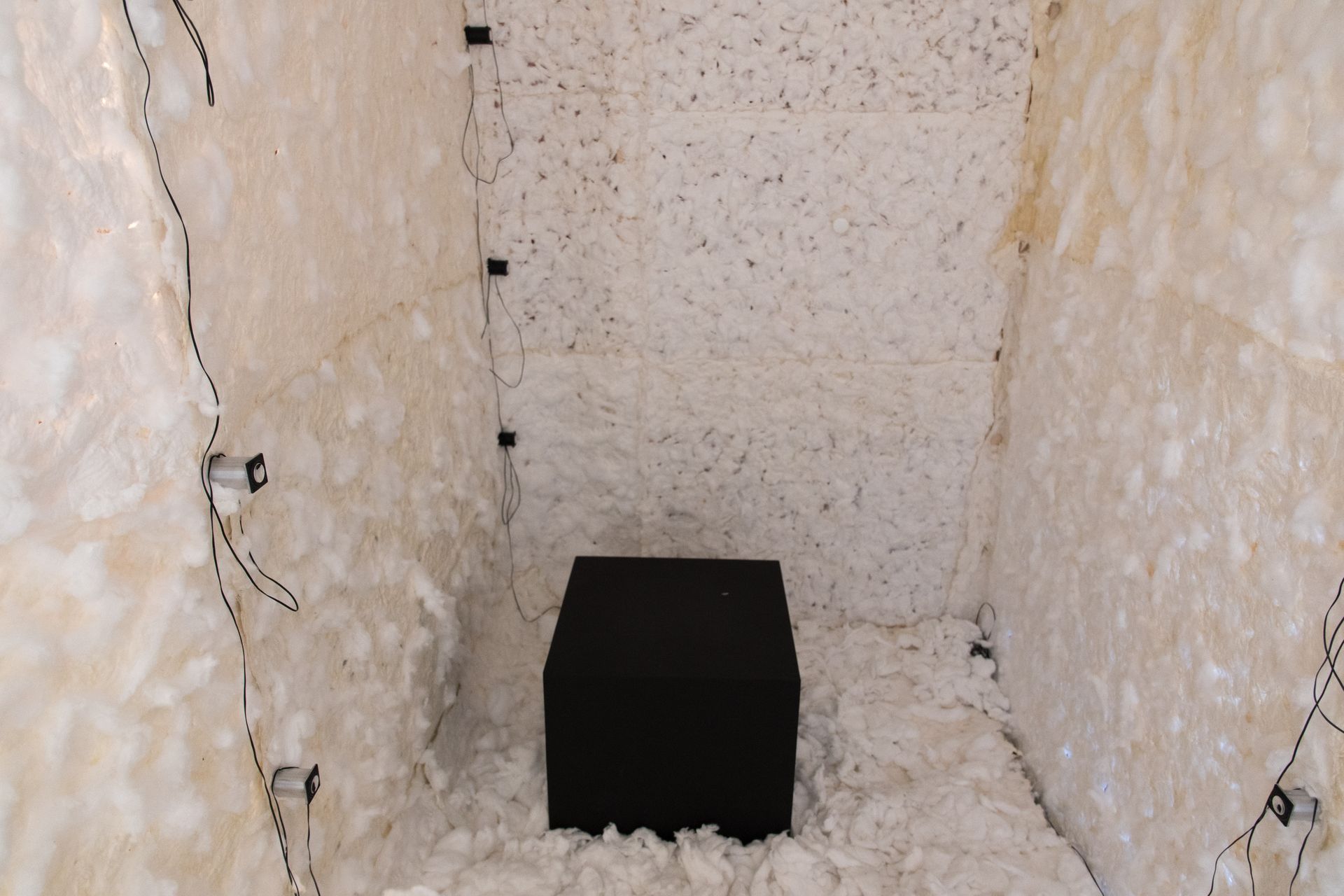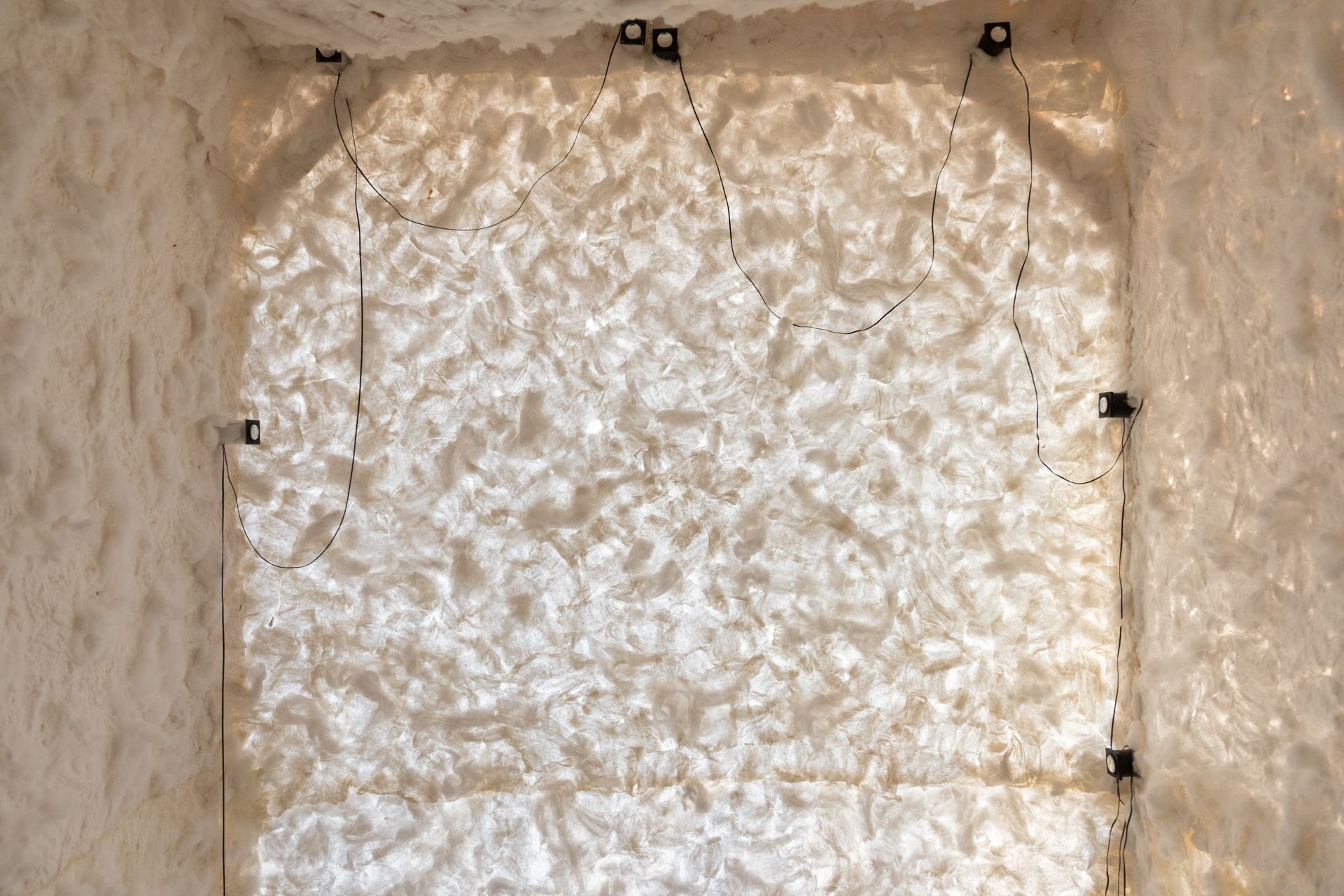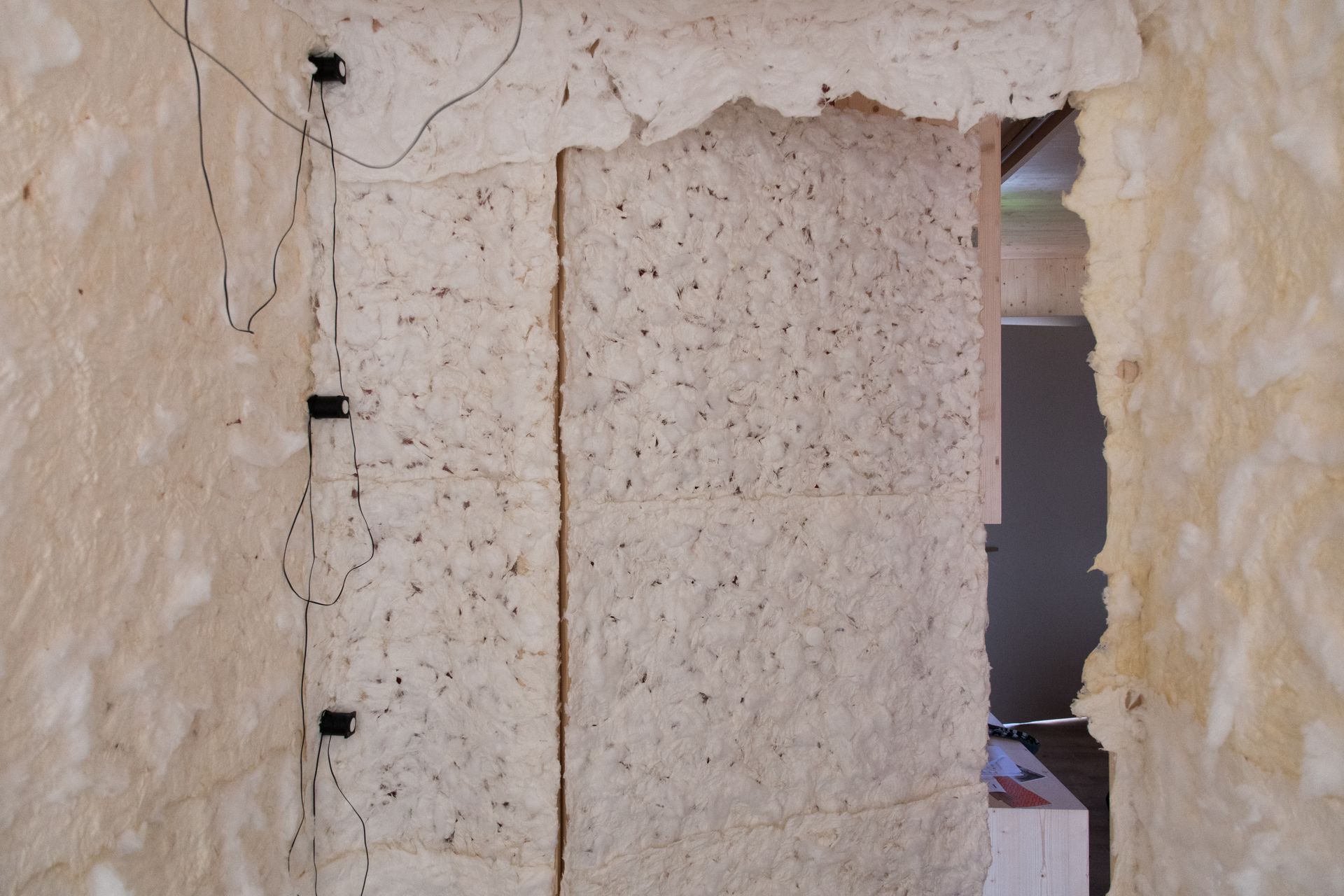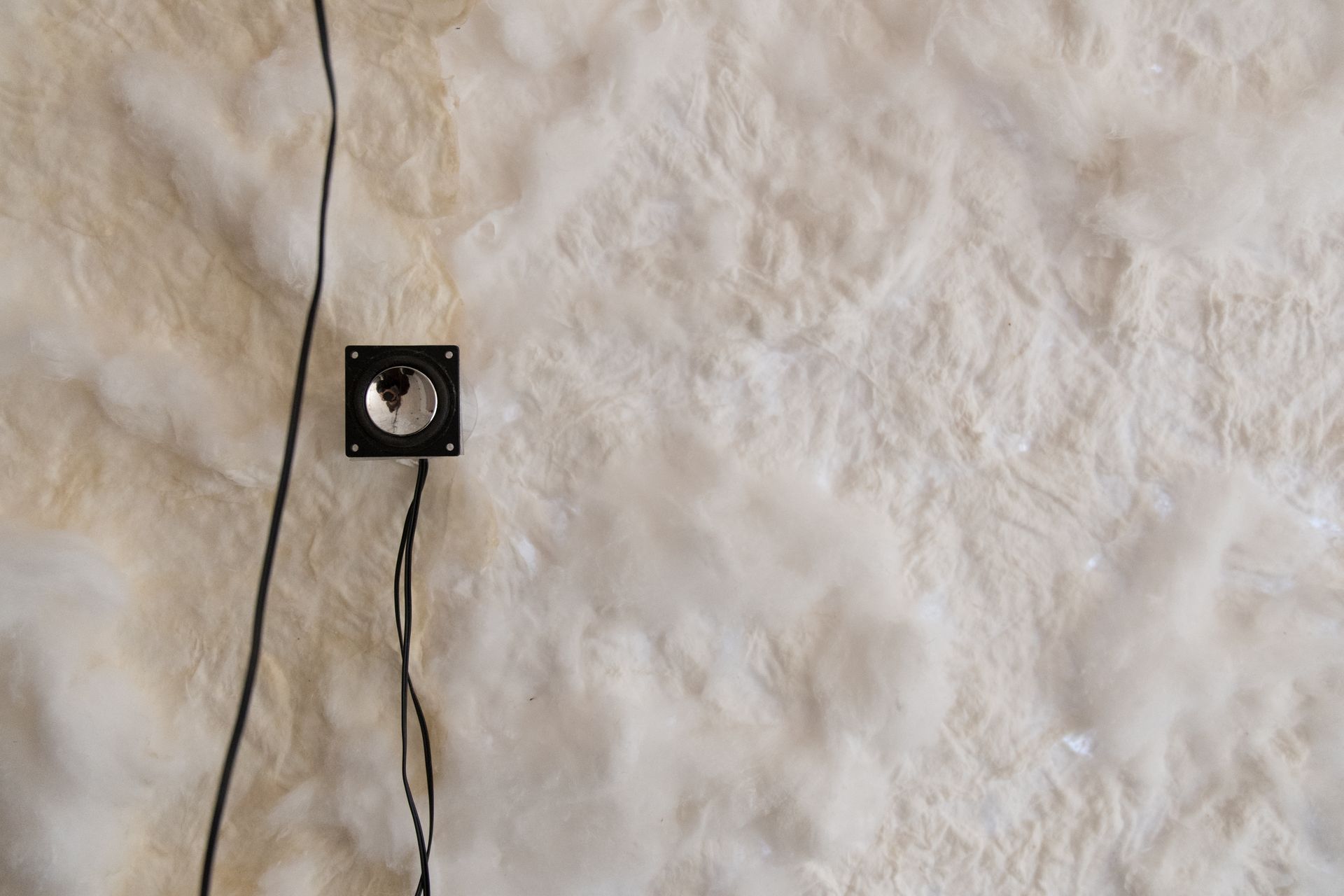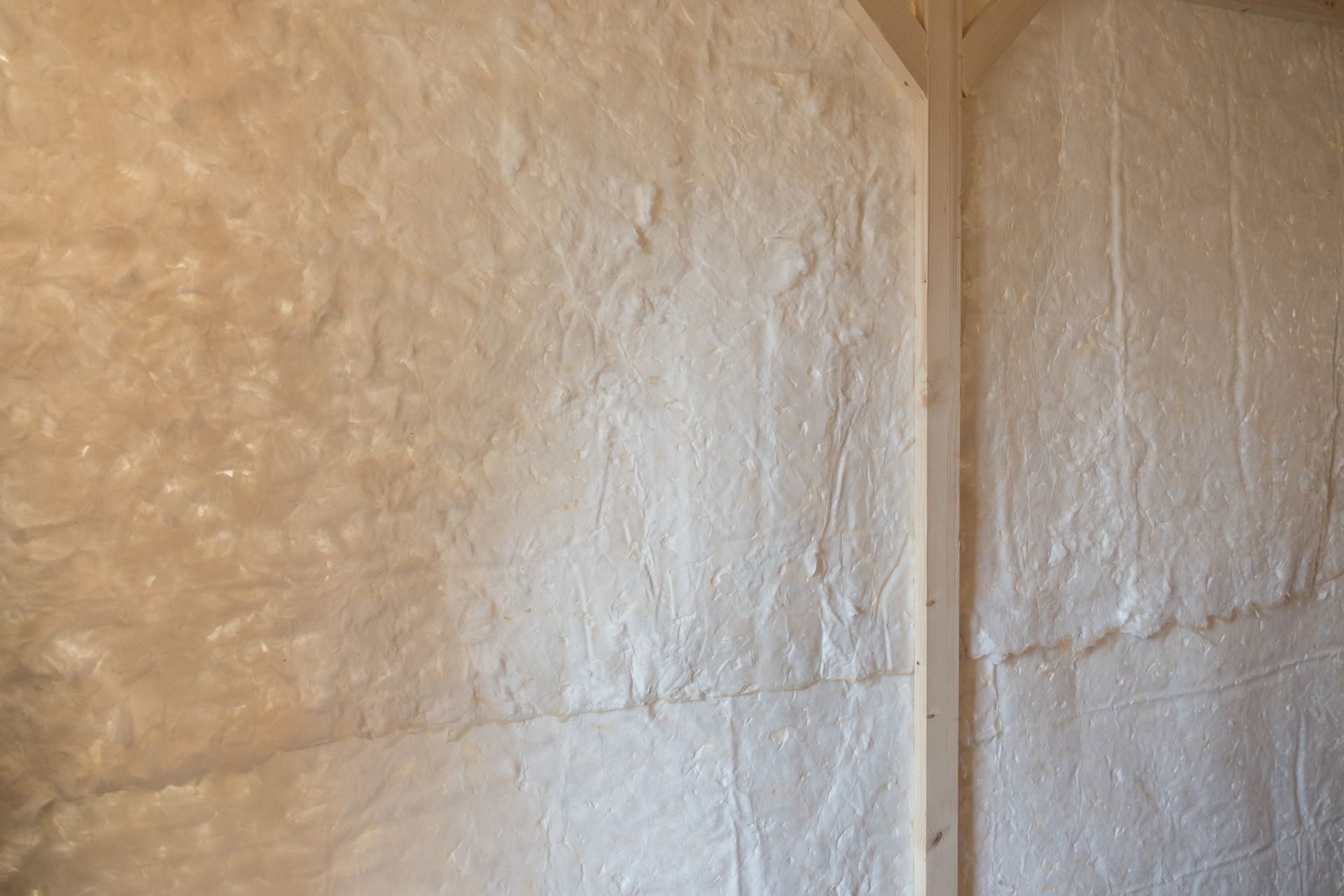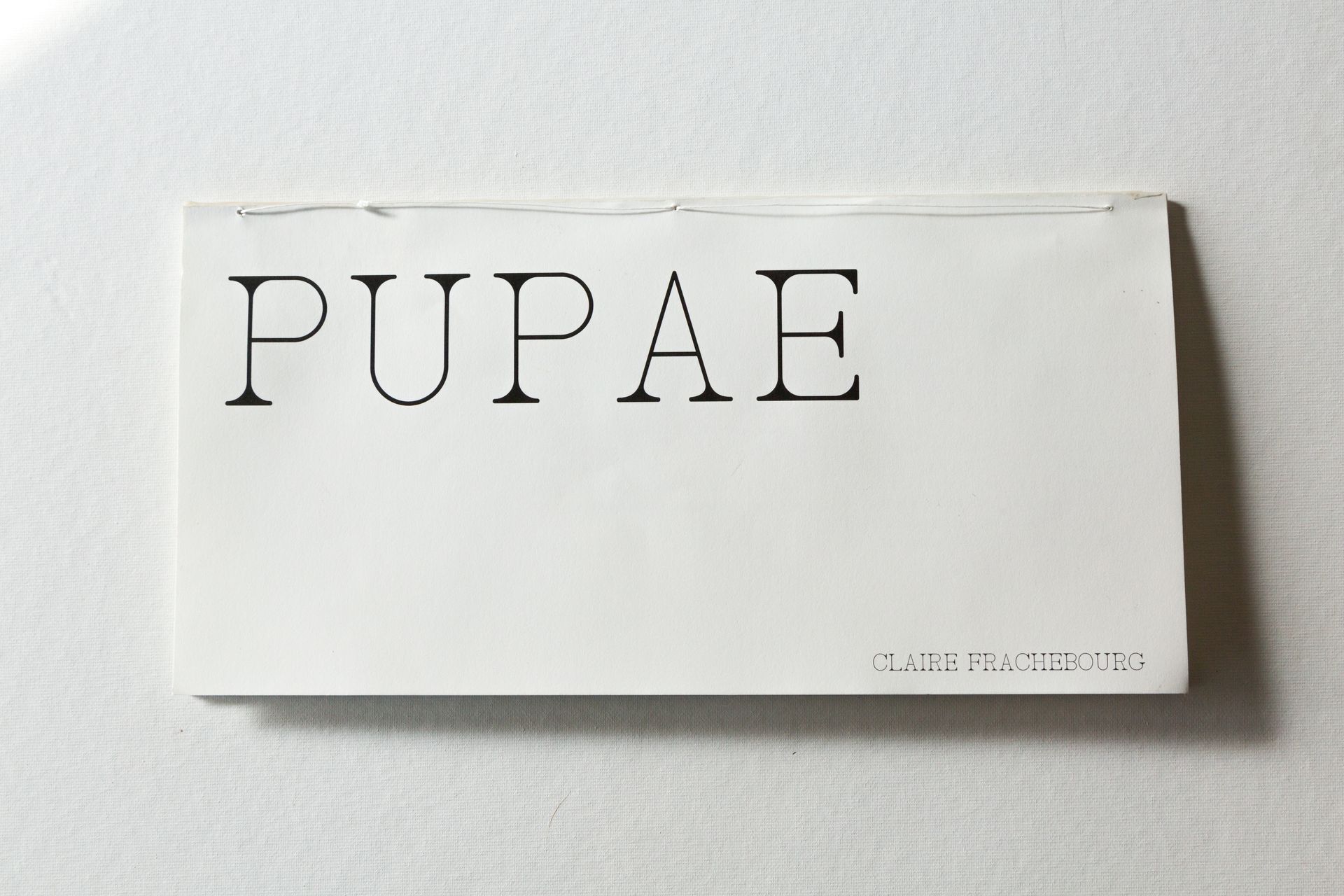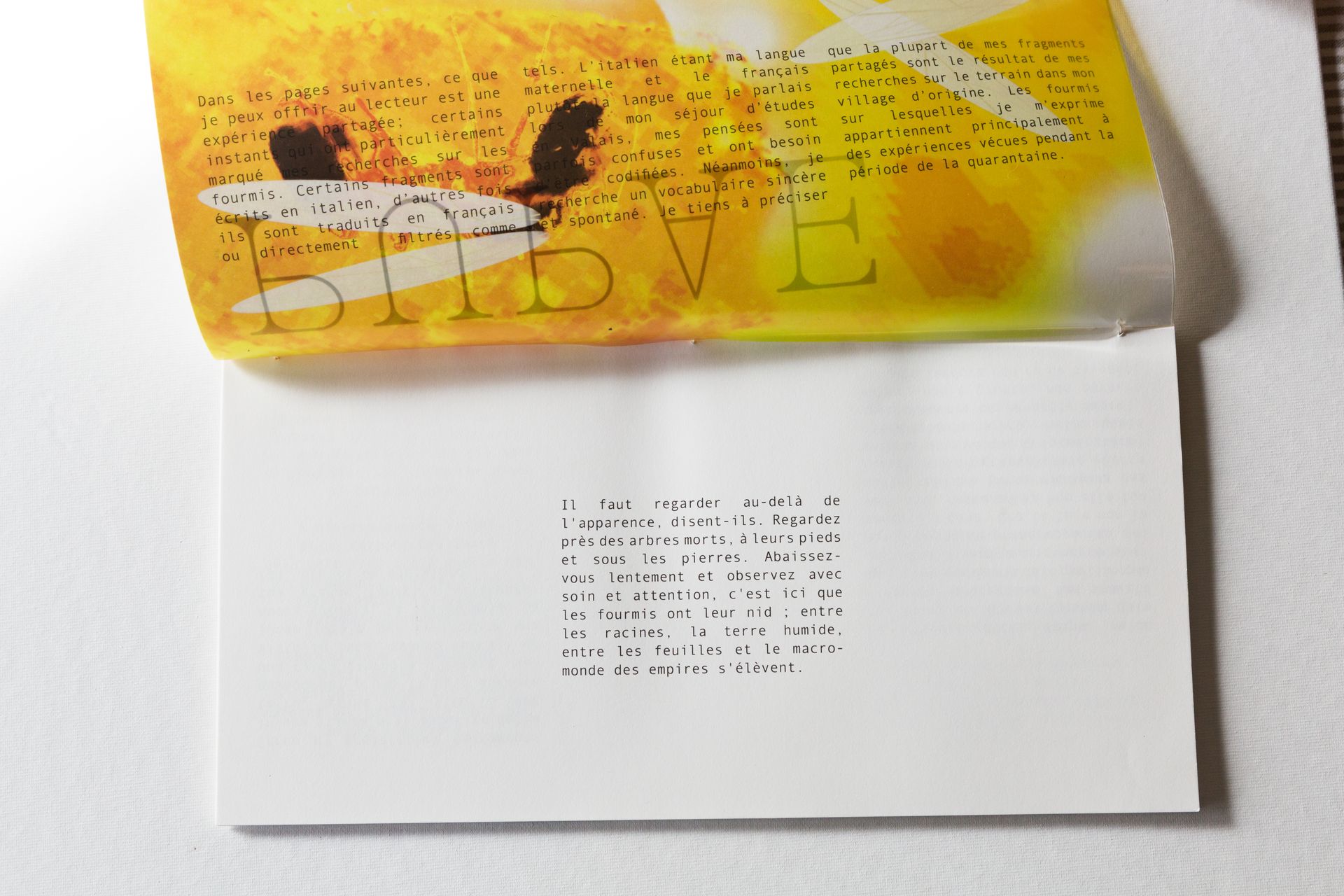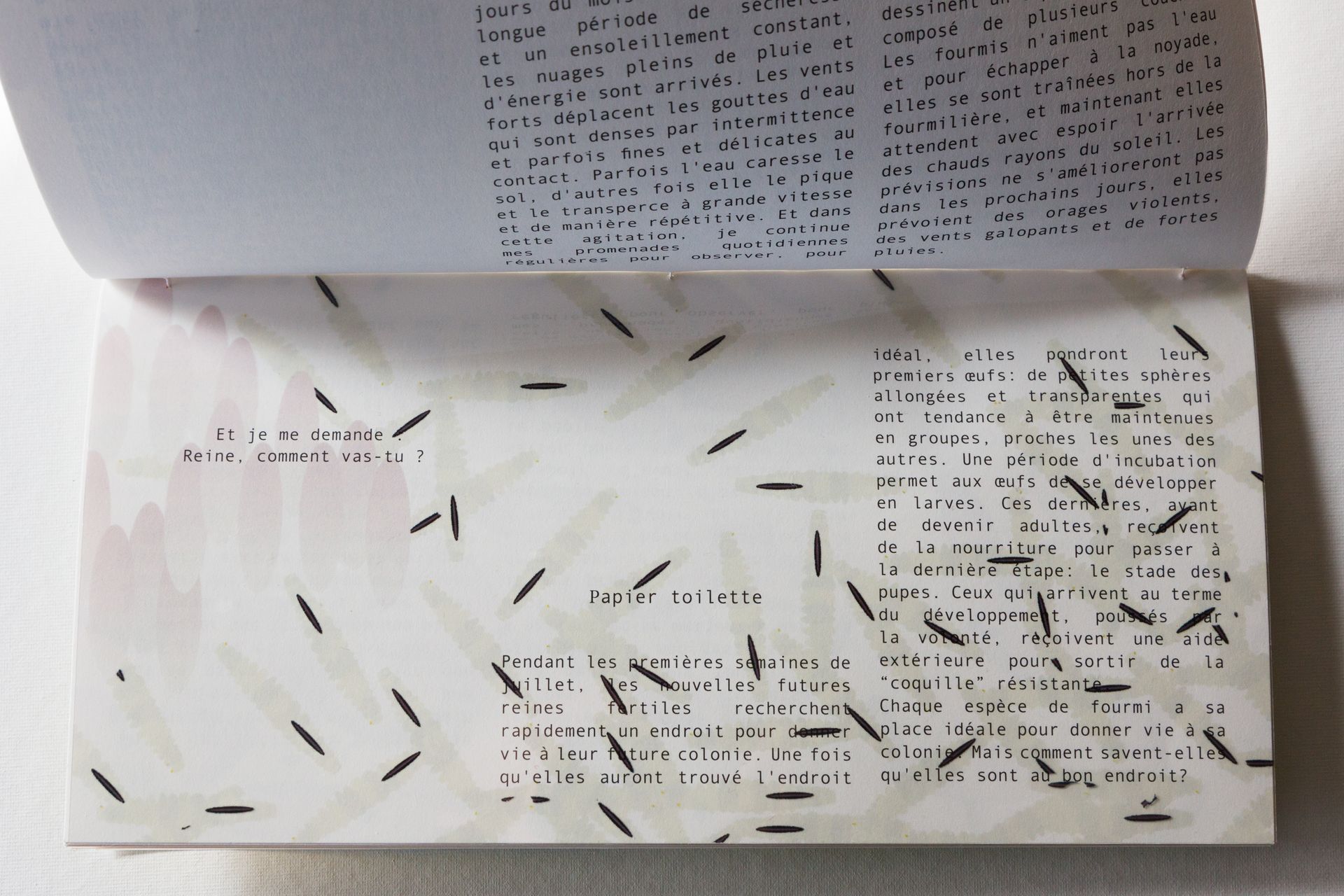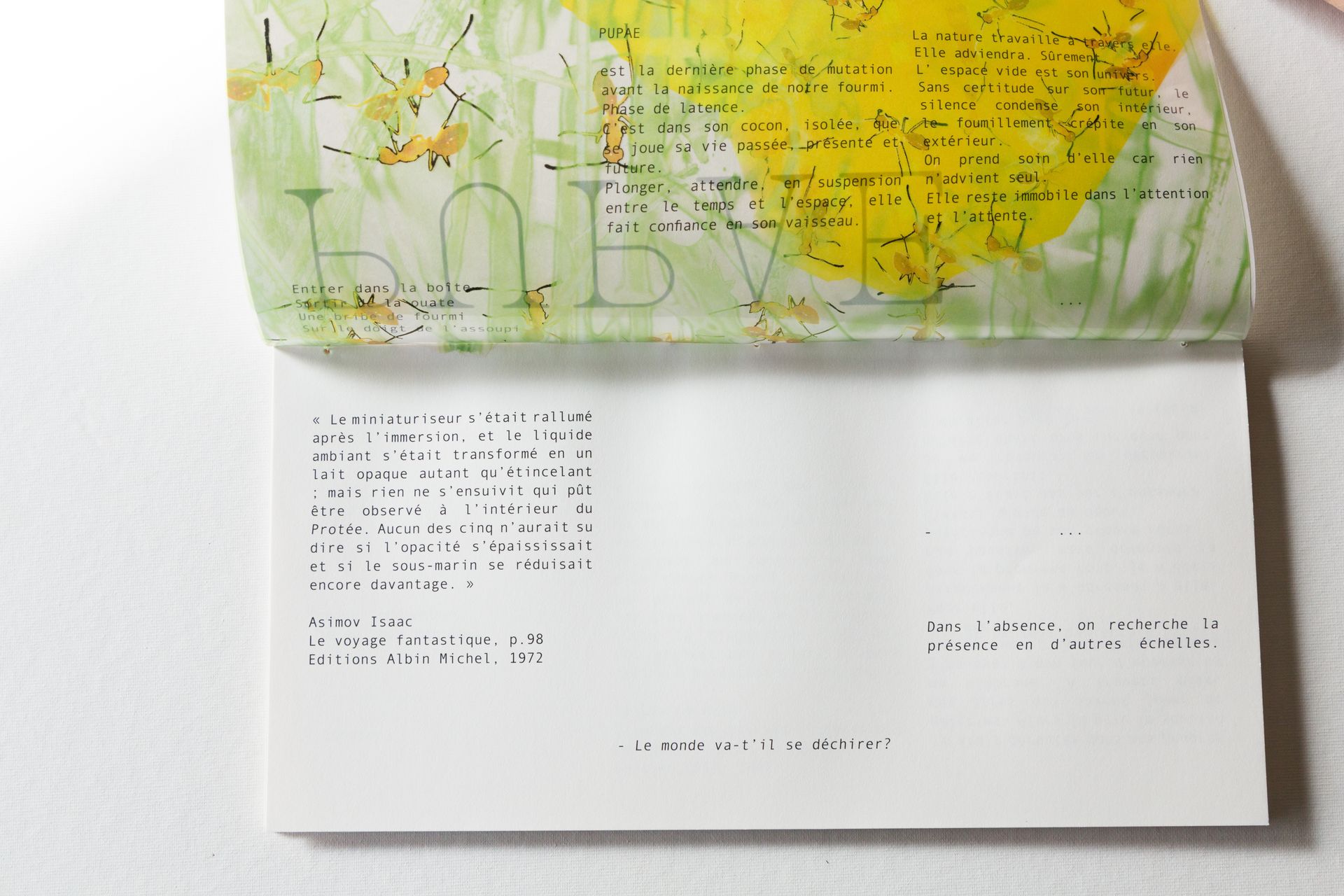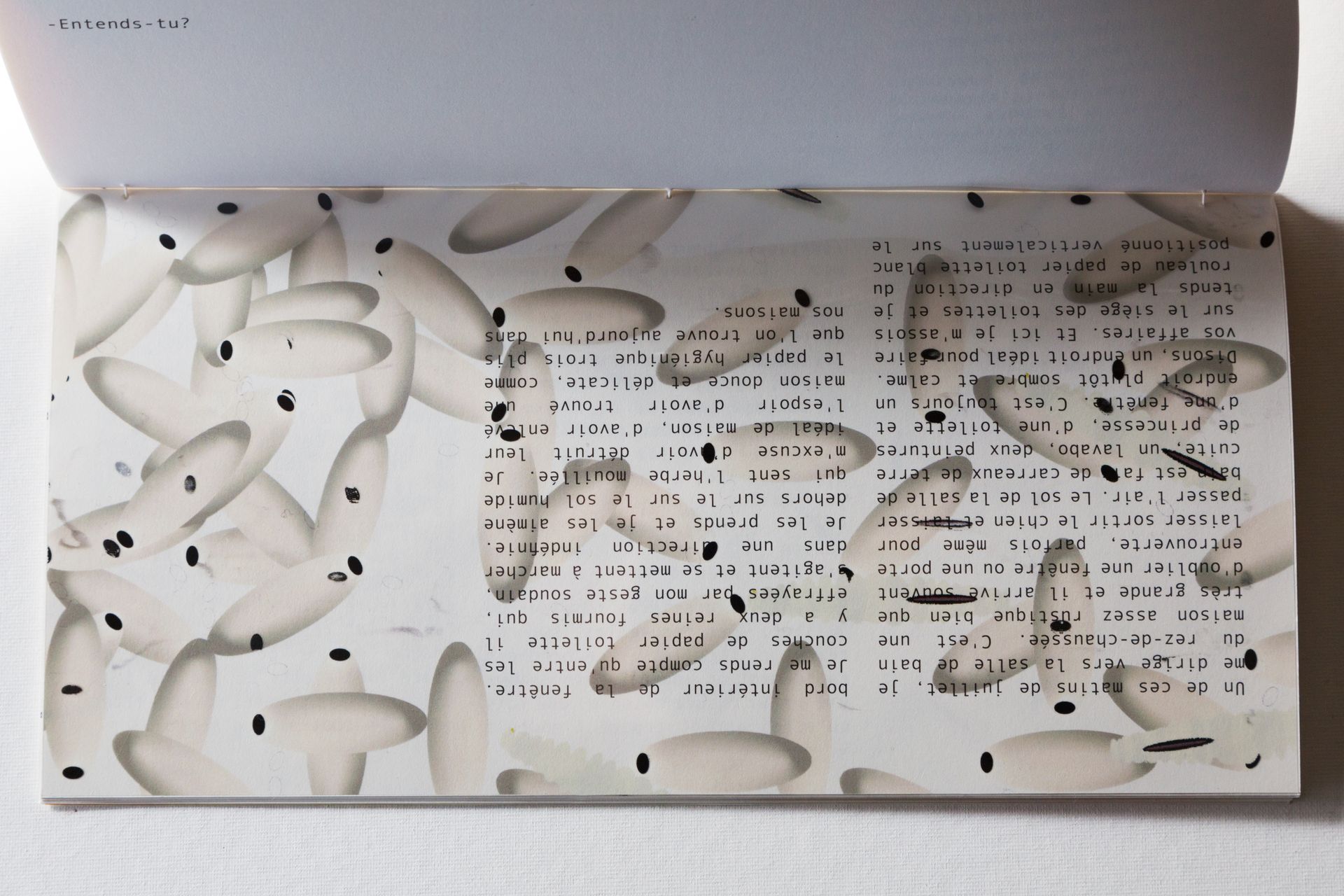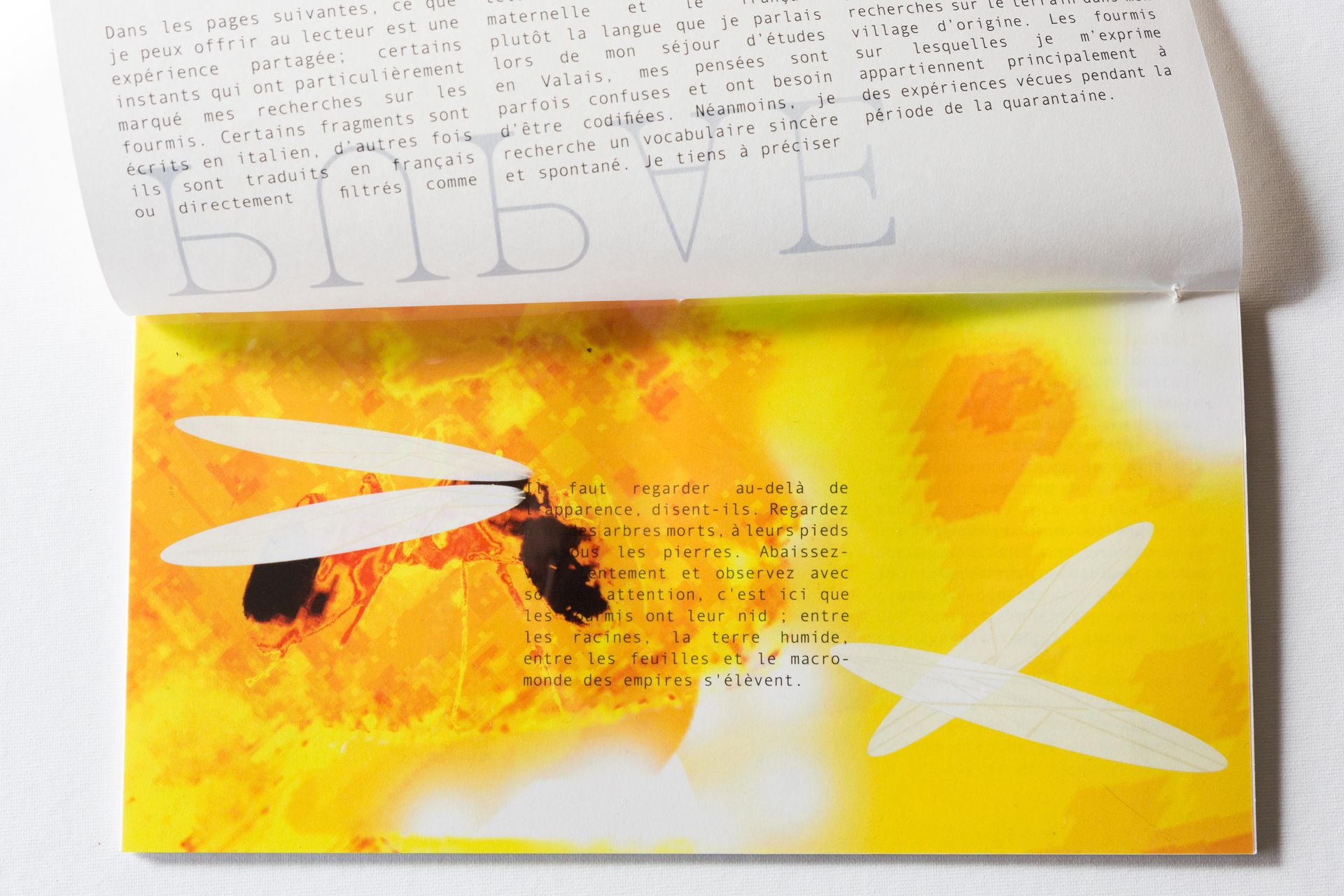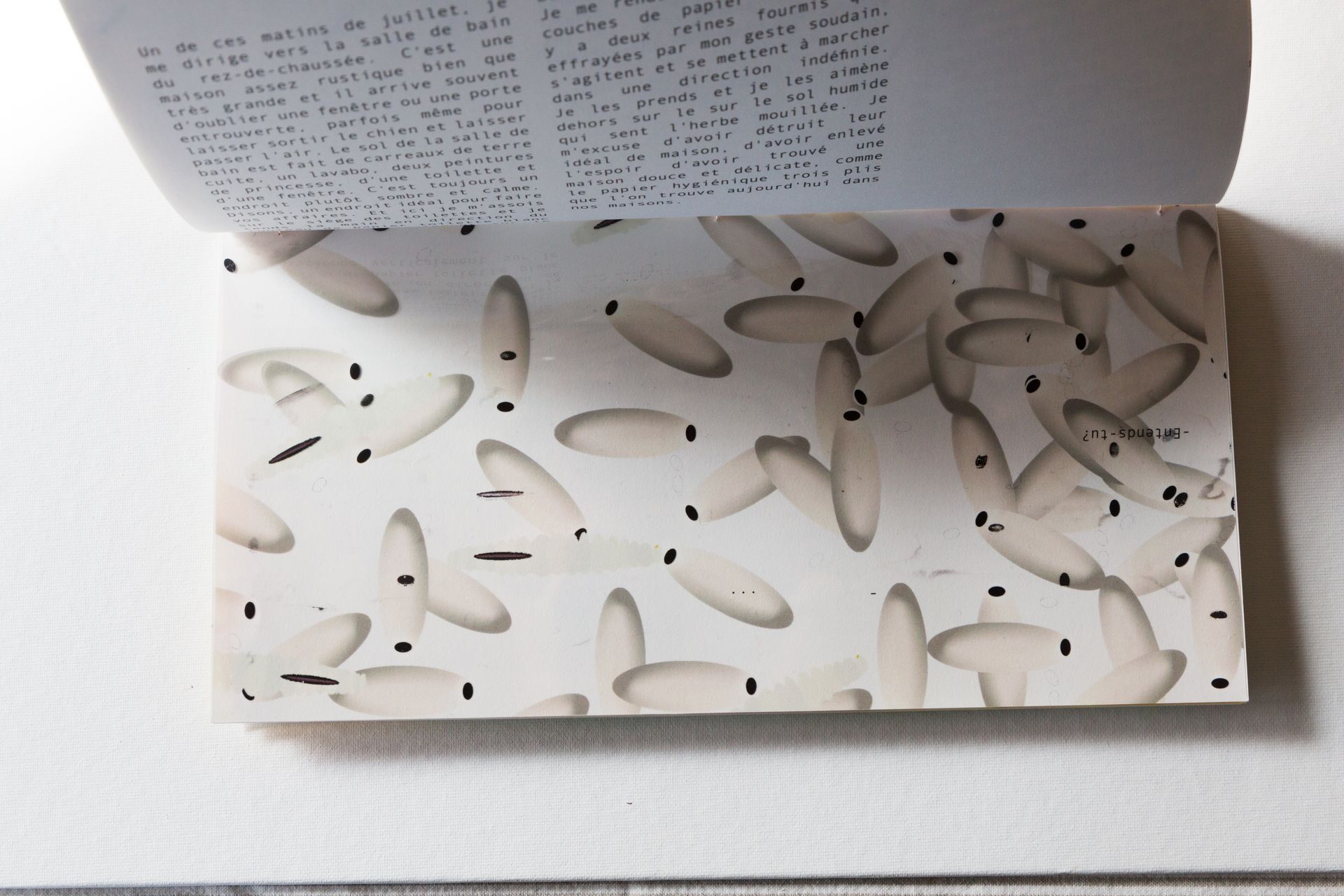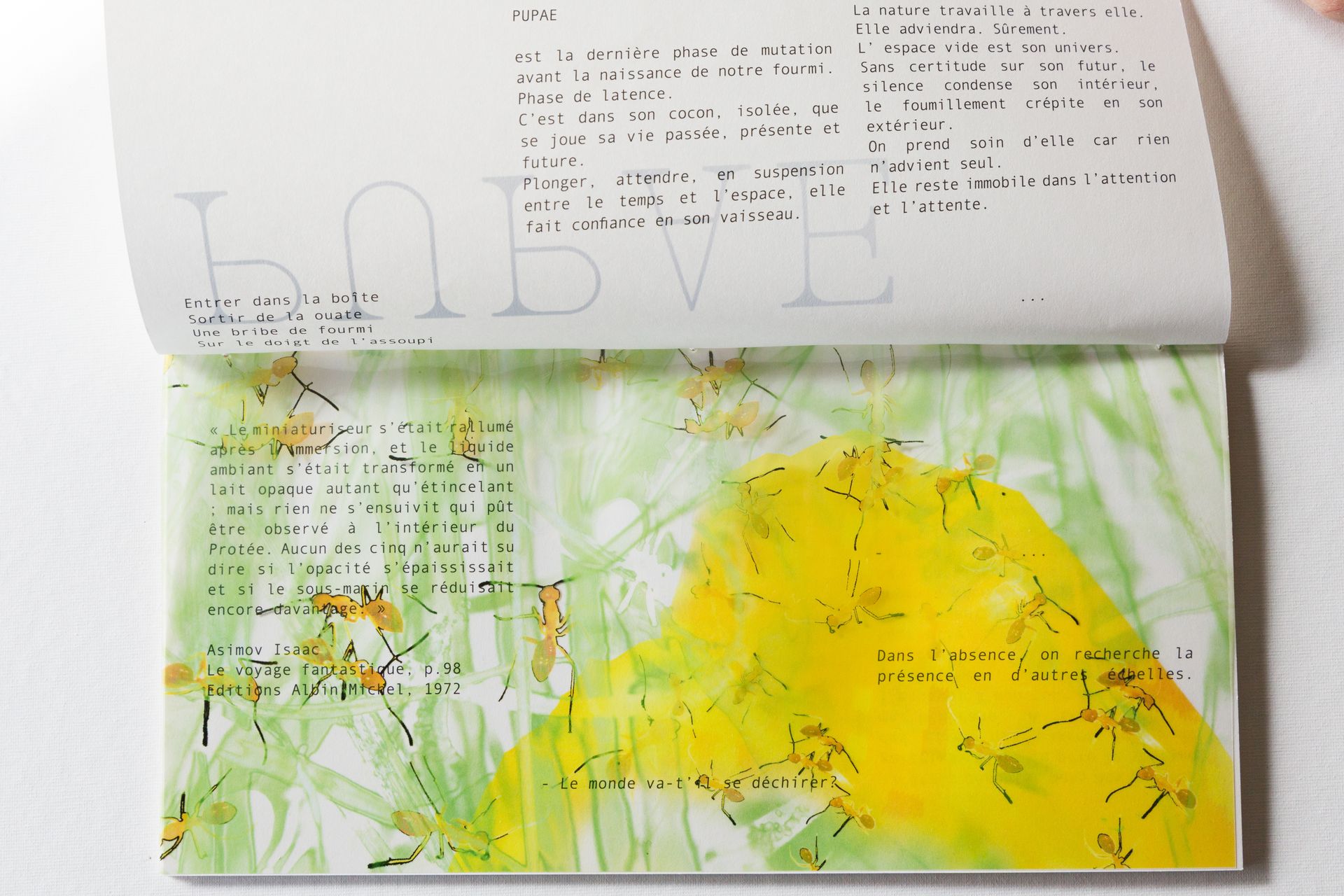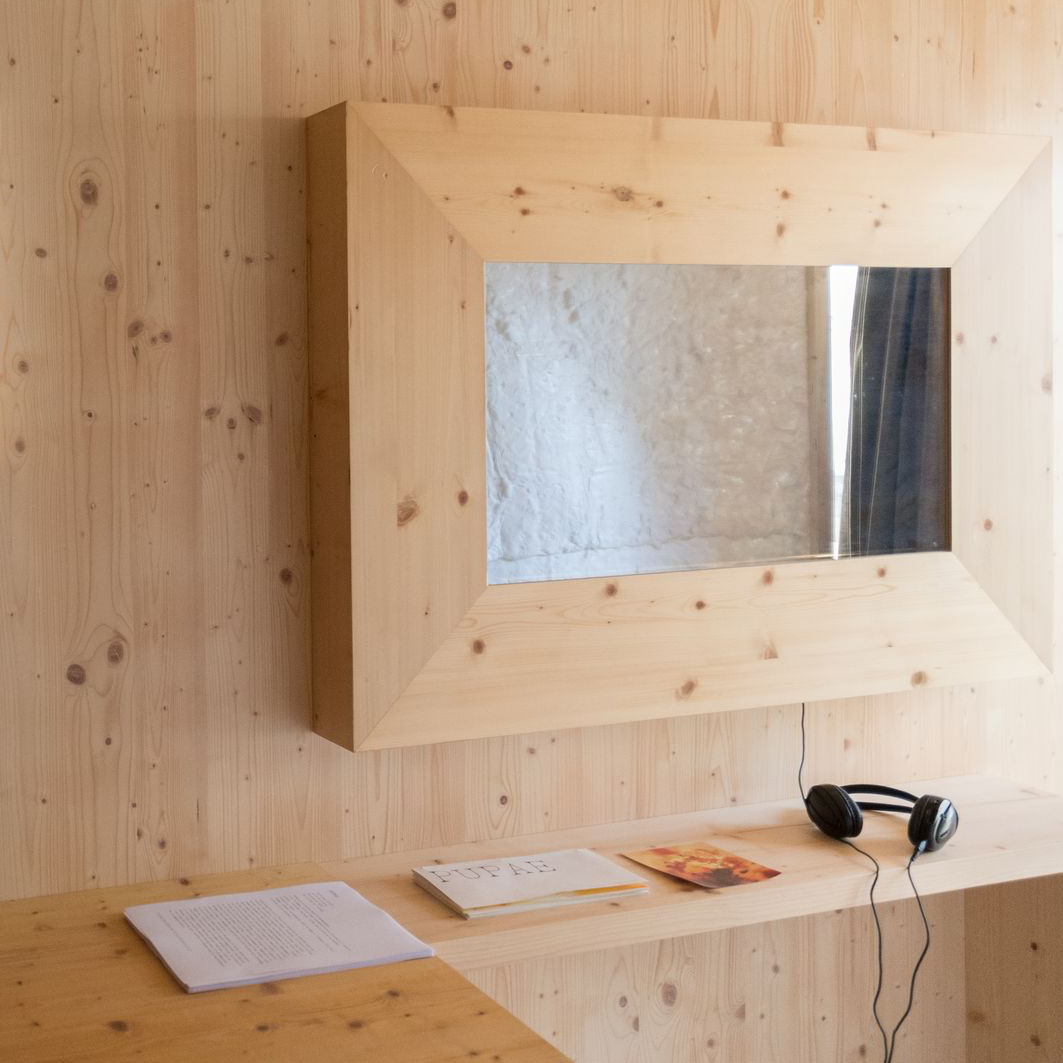PUPAE
2020
Ecohub in the HEI campus, Sion
An exhibition co-created with Claire Frachebourg
In collaboration with the association Utopia International, The Social Fluids scientific laboratory
of the biology department of the University of Fribourg, the EDHEA The HES-SO Valais-Wallis and the support of U-change
Cocoon, 2020
PUPAE
Ecohub in the HEI campus, Sion
Cotton, starch, wood, mini speakers, ants phrases, neon lights and black painting
130 × 260 × 210 cm
PUPAE
Exhibition, 2020
Co-created with Claire Frachebourg
Ecohub in the HEI campus, Sion
In collaboration with the association Utopia International, The Social Fluids scientific laboratory of the biology department of the University of Fribourg, the EDHEA The HES-SO Valais-Wallis and the support of U-change
PUPAE
2020
Paper sheets (120 gsm), transparent plastic sheets, sewing thread
26 × 13 cm
Fragments of books and memories come together, illustrated with images created by Muzi that tell the story of the birth of an ant colony. The texts interact with the images printed on transparent paper, creating a layered visual and narrative dialogue.
PUPAE, Substrate-borne Vibrations
2020
Endoscope video 9’09’’ looped
Interview to Adria Leboeuf and Amritansh Vats,
researcher and researcher at the Social Fluid laboratory
at the University of Friborg
Substrate-borne Vibrations, 2020
PUPAE
Endoscope video 9’09’’ looped
Interview to Adria Leboeuf and Amritansh Vats,
researcher and researcher at the Social Fluid laboratory
at the University of Friborg
PUPAE was born out of the desire to combine two different art practices, Claire’s and my own, united by a common interest for the “other” and, mainly, insects. We quickly realized that the world is abundantly populated with ants of various kinds, each species with its characteristics and peculiarities: small, large, fast, slow, peaceful, restless, nesting in different materials. An insect that we can easily find in our environment and observe without directly interacting with it, leaving it to express itself and to simply be. Furthermore, we admired its particular ability to adapt, a typical characteristic of ants, their complex way of communicating and living in a social living system.
This exhibition is a collection of attempts at relating to our neighbors. We are talking about ants, or rather, the ants here are talking to us. In the meticulousness to which they invite us, we have tried to discover their language and music, and make it play in our ear, which is morphologically very different from theirs. Listening to their “verses,” registered thanks to micro contacts, makes us reach a meeting point between the two worlds. From the dialogue with the outside world and the scientists from the Social Fluids laboratory, the discourse, as it circulates, widens with multiple curiosities and sensitivities. This varied experience creates a fusion of materialities and textures that questions the very nature of the installation. The small scale always leads to a larger one, and ants shift our gaze to other proportions and other temporalities. Becoming aware of their diversity, forging new links, new ways of perceiving and communicating is to hybridize a little more, be reborn, and dive into the swarm of complexity.
.
PUPAE was born out of the desire to combine two different art practices, Claire’s and my own, united by a common interest for the “other” and, mainly, insects. We quickly realized that the world is abundantly populated with ants of various kinds, each species with its characteristics and peculiarities: small, large, fast, slow, peaceful, restless, nesting in different materials. An insect that we can easily find in our environment and observe without directly interacting with it, leaving it to express itself and to simply be. Furthermore, we admired its particular ability to adapt, a typical characteristic of ants, their complex way of communicating and living in a social living system.
This exhibition is a collection of attempts at relating to our neighbors. We are talking about ants, or rather, the ants here are talking to us. In the meticulousness to which they invite us, we have tried to discover their language and music, and make it play in our ear, which is morphologically very different from theirs. Listening to their “verses,” registered thanks to micro contacts, makes us reach a meeting point between the two worlds. From the dialogue with the outside world and the scientists from the Social Fluids laboratory, the discourse, as it circulates, widens with multiple curiosities and sensitivities. This varied experience creates a fusion of materialities and textures that questions the very nature of the installation. The small scale always leads to a larger one, and ants shift our gaze to other proportions and other temporalities. Becoming aware of their diversity, forging new links, new ways of perceiving and communicating is to hybridize a little more, be reborn, and dive into the swarm of complexity.




